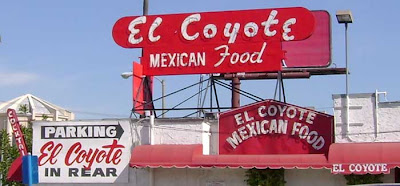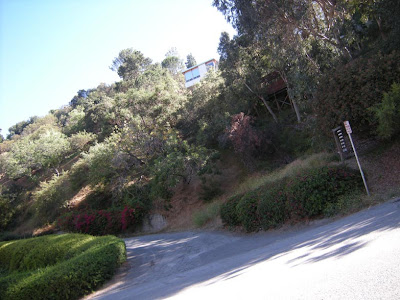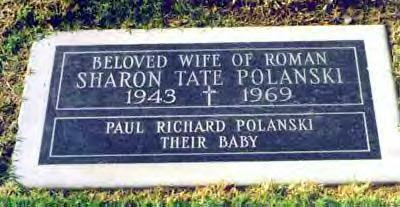
Sharon Marie Tate (January 24, 1943 – August 9, 1969) was an American actress. During the 1960s she played small television roles before appearing in several films. After receiving positive reviews for her comedic performances, she was hailed as one of Hollywood's promising newcomers and was nominated for a Golden Globe Award for her performance in Valley of the Dolls (1967). She also appeared regularly in fashion magazines as a model and cover girl.
Married to the film director Roman Polanski in 1968, Tate was eight and a half months pregnant when she was murdered in her home, along with four others, by followers of Charles Manson.

In the first days of November 1968, Charles Manson established The Family at alternative headquarters in Death Valley's environs, where they occupied two unused or little-used ranches, Myers and Barker. The former, to which the group had initially headed, was owned by the grandmother of a new woman in the Family. The latter was owned by an elderly, local woman to whom Manson presented himself and a male Family member as musicians in need of a place congenial to their work. When the woman agreed to let them stay there if they'd fix up things, Manson honored her with one of the Beach Boys' gold records, several of which he had been given by Dennis Wilson.

While back at Spahn Ranch, no later than December, Manson and Tex Watson visited a Topanga Canyon acquaintance who played them the Beatles' White Album, then recently released. Despite having been 29 years old and imprisoned when the Beatles first came to America in 1964, Manson was obsessed with the group. At McNeil Prison, he had told fellow inmates, including Alvin Karpis, that he could surpass the group in fame; to the Family, he spoke of the group as "the soul" and "part of 'the hole in the infinite.'"
For some time, Manson had been saying that racial tension between blacks and whites was growing and that blacks would soon rise up in rebellion in America's cities. He had emphasized Martin Luther King, Jr.'s assassination, which had taken place on April 4, 1968. On a bitterly cold New Year's Eve at Myers Ranch, the Family members, gathered outside around a large fire, listened as Manson explained that the social turmoil he had been predicting had also been predicted by the Beatles. The White Album songs, he declared, told it all, although in code. In fact, he maintained (or would soon maintain), the album was directed at the Family itself, an elect group that was being instructed to preserve the worthy from the impending disaster.
In early January 1969, the Family escaped the desert's cold and positioned itself to monitor L.A.'s supposed tension by moving to a canary-yellow home in Canoga Park, not far from the Spahn Ranch. Because this locale would allow the group to remain "submerged beneath the awareness of the outside world," Manson called it the Yellow Submarine, another Beatles reference. There, Family members prepared for the impending apocalypse, which, around the campfire, Manson had termed "Helter Skelter," after the song of that name.
By February, Manson's vision was complete. The Family would create an album whose songs, as subtle as those of the Beatles, would trigger the predicted chaos. Ghastly murders of whites by blacks would be met with retaliation, and a split between racist and non-racist whites would yield whites' self-annihilation. Blacks' triumph, as it were, would merely precede their being ruled by the Family, which would ride out the conflict in "the bottomless pit"—a secret city beneath Death Valley. At the Canoga Park house, while Family members worked on vehicles and pored over maps to prepare for their desert escape, they also worked on songs for their world-changing album. When they were told Terry Melcher was to come to the house to hear the material, the women prepared a meal and cleaned the place; but Melcher never arrived.

Manson's Encounter with Tate
On March 23, 1969, Manson entered, uninvited, upon 10050 Cielo Drive, which he had known as the residence of Terry Melcher. This was Rudi Altobelli's property, where Melcher was no longer the tenant. As of that February, the tenants were Sharon Tate and Roman Polanski.
Manson was met by Shahrokh Hatami, a photographer and Tate's friend. Hatami was there to photograph Tate in advance of her departure for Rome the next day. Having seen Manson through a window as Manson approached the main house, Hatami had gone onto the front porch to ask him what he wanted.
When Manson told Hatami he was looking for someone whose name Hatami did not recognize, Hatami informed him the place was the Polanski residence. Hatami advised him to try "the back alley," by which he meant the path to the guest house, beyond the main house. Concerned over the stranger on the property, Hatami was now down on the front walk, to confront Manson. Appearing behind Hatami, in the house's front door, Tate asked him who was calling. Hatami said a man was looking for someone. Hatami and Tate maintained their positions while Manson, without a word, went back to the guest house, returned a minute or two later, and left.
That evening, Manson returned to the property and again went back to the guest house. Presuming to enter the enclosed porch, he spoke with Rudi Altobelli, who was just coming out of the shower. Although Manson asked for Melcher, Altobelli felt Manson had come looking for him. This is consistent with prosecutor Vincent Bugliosi's later discovery that Manson had apparently been to the place on earlier occasions since Melcher's departure from it.
Speaking through the inner screen door, Altobelli told Manson that Melcher had moved to Malibu. He lied that he did not know Melcher's new address. In response to a question from Manson, Altobelli said he himself was in the entertainment business, although, having met Manson the previous year, at Dennis Wilson's home, he was sure Manson already knew that. At Wilson's, Altobelli had complimented Manson lukewarmly on some of his musical recordings that Wilson had been playing.
When Altobelli informed Manson he was going out of the country the next day, Manson said he'd like to speak with him upon his return; Altobelli lied that he would be gone for more than a year. In response to a direct question from Altobelli, Manson explained that he had been directed to the guest house by the persons in the main house; Altobelli expressed the wish that Manson not disturb his tenants.
Manson left. As Altobelli flew with Tate to Rome the next day, Tate asked him whether "that creepy-looking guy" had gone back to the guest house the day before.

Family crimes
Crowe shooting
On May 18, 1969, Terry Melcher visited Spahn Ranch to hear Manson and the women sing. Melcher arranged a subsequent visit, not long thereafter, on which he brought a friend who possessed a mobile recording unit; but he himself did not record the group.
By June, Manson was telling the Family they might have to show blacks how to start "Helter Skelter." When Manson tasked Watson with obtaining money supposedly intended to help the Family prepare for the conflict, Watson defrauded a black drug dealer named Bernard "Lotsapoppa" Crowe. Crowe responded with a threat to wipe out everyone at Spahn Ranch. Manson countered on July 1, 1969, by shooting Crowe at his Hollywood apartment.
Manson's mistaken belief that he had killed Crowe was seemingly confirmed by a news report of the discovery of the dumped body of a Black Panther in Los Angeles. Although Crowe was not a member of the Black Panthers, Manson, concluding he had been, expected retaliation from the group. He turned Spahn Ranch into a defensive camp, with night patrols of armed guards."If we'd needed any more proof that Helter Skelter was coming down very soon, this was it," Tex Watson would later write, "[B]lackie was trying to get at the chosen ones."
Hinman murder
On July 25, 1969, Manson sent sometime Family member Bobby Beausoleil along with Mary Brunner and Susan Atkins to the house of acquaintance Gary Hinman, to persuade him to turn over money Manson thought Hinman had inherited. The three held the uncooperative Hinman hostage for two days, during which Manson showed up with a sword to slash his ear. After that, Beausoleil stabbed Hinman to death, ostensibly on Manson’s instruction. Before leaving the Topanga Canyon residence, Beausoleil, or one of the women, used Hinman’s blood to write "Political piggy" on the wall and to draw a panther paw, a Black Panther symbol.
In magazine interviews of 1981 and 1998–99, Beausoleil would say he went to Hinman’s to recover money paid to Hinman for drugs that had supposedly been bad; he added that Brunner and Atkins, unaware of his intent, went along idly, merely to visit Hinman. On the other hand, Atkins, in her 1977 autobiography, wrote that Manson directly told Beausoleil, Brunner, and her to go to Hinman’s and get the supposed inheritance—$21,000. She said Manson had told her privately, two days earlier, that, if she wanted to "do something important," she could kill Hinman and get his money.

Tate murders
Beausoleil was arrested on August 6, 1969, after he had been caught driving Hinman's car. Police found the murder weapon in the tire well. Two days later, Manson told Family members at Spahn Ranch, "Now is the time for Helter Skelter."
On the night of August 8, Manson directed Tex Watson to take Susan Atkins, Linda Kasabian, and Patricia Krenwinkel to "that house where Melcher used to live" and "totally destroy everyone in [it], as gruesome as you can." He told the women to do as Watson would instruct them. Krenwinkel was one of the early Family members, one of the hitchhikers who had allegedly been picked up by Dennis Wilson.

On the evening of August 8, 1969, Sharon Tate, Jay Sebring, Wojciech Frykowski and Frykowski's girlfriend, coffee heiress Abigail Folger, ate their last meal at El Coyote on Beverly Boulevard. They returned to the Cielo Drive home in Benedict Canyon about 10:30 p.m.

When the four Family members arrived at the entrance to the Cielo Drive property, Watson climbed a telephone pole near the gate and cut the phone line. He had been to the house previously, on Family matters.
It was now around midnight and into August 9, 1969. Backing their car down to the bottom of the hill that led up to the place, the group parked there and walked back up to the house. Thinking the gate might be electrified or rigged with an alarm, they climbed a brushy embankment at its right and dropped onto the grounds. Just then, headlights came their way from farther within the angled property. Telling the women to lie in the bushes, Watson stepped out, gave a command to halt, and shot to death the approaching driver, 18-year-old Steven Parent. After cutting the screen of an open window of the main house, Watson told Kasabian to keep watch down by the gate. He removed the screen, entered through the window, and let Atkins and Krenwinkel in through the front door.

Slaughter
As Watson whispered to Atkins, Polanski's friend Wojciech Frykowski awoke on the living-room couch; Watson kicked him in the head. When Frykowski asked him who he was and what he was doing there, Watson replied, "I’m the devil, and I’m here to do the devil’s business."
On Watson’s direction, Atkins found the house's three other occupants and, with Krenwinkel's help, brought them to the living room. The three were Tate, eight and a half months pregnant; her friend and former lover Jay Sebring, a noted hairstylist; and Frykowski’s lover Abigail Folger, heiress to the Folger coffee fortune. Polanski, Tate's husband, was in London, at work on a film project.
Watson began to tie Tate and Sebring together by their necks with rope he'd brought and slung up over a beam. Sebring's protest—his second—of rough treatment of Tate prompted Watson to shoot him. Folger was taken momentarily back to her bedroom for her purse, out of which she gave the intruders $70. After that, Watson stabbed the groaning Sebring seven times.
Frykowski's hands had been bound with a towel. Freeing himself, Frykowski began struggling with Atkins, who stabbed at his legs with the knife with which she had been guarding him. As he fought his way toward and out the front door, onto the porch, Watson joined in against him. Watson struck him over the head with the gun multiple times, stabbed him repeatedly, and shot him twice. Watson broke the gun's right grip in the process.
Around this time, Kasabian was drawn up from the driveway by "horrifying sounds." She arrived outside the door. In a vain effort to halt the massacre, she told Atkins falsely that someone was coming.
Inside the house, Folger had escaped from Krenwinkel and fled out a bedroom door to the pool area. Folger was pursued to the front lawn by Krenwinkel, who stabbed – and finally, tackled – her. She was dispatched by Watson; her two assailants had stabbed her twenty-eight times. As Frykowski struggled across the lawn, Watson finished him with a final flurry of stabbing. Frykowski was stabbed a total of fifty-one times.
Back in the house, Atkins, Watson, or both killed Tate, who was stabbed sixteen times. Tate pleaded to be allowed to live long enough to have her baby; she cried, "Mother... mother..." until she was dead.

Earlier, as the four Family members had headed out from Spahn Ranch, Manson had told the women to "leave a sign… something witchy." Using the towel that had bound Frykowski’s hands, Atkins wrote "pig" on the house’s front door, in Tate's blood. En route home, the killers changed out of bloody clothes, which were ditched in the hills, along with their weapons.
In initial confessions to cellmates of hers at Sybil Brand Institute, Atkins would say she killed Tate. In later statements to her attorney, to prosecutor Vincent Bugliosi, and before a grand jury, Atkins indicated Tate had been stabbed by Tex Watson. In his 1978 autobiography, Watson himself said that he stabbed Tate and that Atkins did not. Since he was aware that the prosecutor, Bugliosi, and the jury that had tried the other Tate-LaBianca defendants were convinced Atkins had stabbed Tate, he falsely testified that he did not stab her.

The funerals for the five victims were held on Wednesday, August 13. Sharon Tate was interred in the Holy Cross Cemetery, Culver City, California, with her son, Paul Richard Polanski (named posthumously for Polanski's and Tate's fathers), in her arms. The funerals of Tate and Sebring were separated by several hours to allow mourners to attend both.


A decade after the murders, Tate's mother, Doris, in response to the growing cult status of the killers and the possibility that any of them might be granted parole, organized a public campaign against what she considered shortcomings in the state's corrections system which led to amendments to the California criminal law in 1982, which allowed crime victims and their families to make victim impact statements during sentencing and at parole hearings. Doris Tate was the first person to make such an impact statement under the new law, when she spoke at the parole hearing of one of her daughter's killers, Charles "Tex" Watson. She later said that she believed the changes in the law had afforded her daughter dignity that had been denied her before, and that she had been able to "help transform Sharon's legacy from murder victim to a symbol of victims' rights."

No comments:
Post a Comment